Why a Pro-choicer might March for the Babies
On Saturday 12th October, several thousand people of all walks of life will attend a peaceful protest in the city of Melbourne called “March for the Babies”. At the same time, a counter protest will also take place in the city. At one march will be mostly people who identify themselves as “pro-life” and at the other march will be mostly people who identify as “pro-choice”.
I say “mostly” because many people don’t like the rigidity of such terms. On the complex and sensitive issue of abortion, people often have mixed emotions, views, beliefs and opinions. Sometimes a label like “pro-life” or “pro-choice” doesn’t accurately describe someone’s position on abortion.
To clarify, let me try to summarise the two positions as generously and unbiasedly as I can:
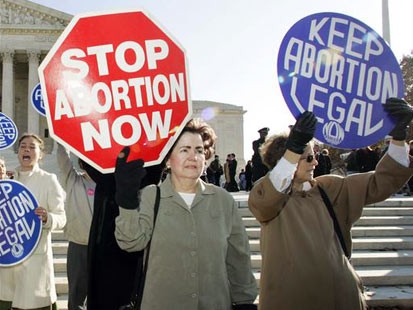 The pro-life position focusses on the life of the unborn child arguing for its right to be protected from abortion.
The pro-life position focusses on the life of the unborn child arguing for its right to be protected from abortion.- The pro-choice position focusses on the choice of the pregnant woman, arguing for her right to have an abortion if she wants to.
When two protests like this take place, it is easy to suggest that these two positions are absolute and that there is no overlap. The sides are polarising and people feel pressured to choose which side you wholeheartedly support. I do not think this needs to be the case. Although, I personally am pro-life, I also acknowledge that there are many positions that a person may hold and I would hate for someone to feel excluded from attending the March for the Babies, simply because they felt they were not sure they were a 100% pro-lifer.
I would even suggest that a pro-choicer might feel free to join the March for the Babies. In fact, I think there are good reasons to do so.
5 REASONS WHY A PRO-CHOICER MIGHT JOIN THE “MARCH FOR THE BABIES”
1. The march is not about taking away women’s rights.
The march began back in 2009, one year after certain abortion laws were passed in Victoria. As it says of the March for the Babies website: “On October 10, 2008, the Victorian Parliament passed the Abortion Law Reform Act, one of the most extreme abortion laws in the world. This law eliminated all legal protection for Victorian children until the moment of birth.” The goal of the march is to draw attention to these laws with a hope that they will one day be repealed. Sure, many people present at the march will have strong views about all abortion. Sure, you may disagree with people you would be marching alongside. But you would agree on one point though – that the laws in Victoria are too extreme and should be changed.
2. The Victorian laws as they presently stand allow for abortion all the way up to birth.
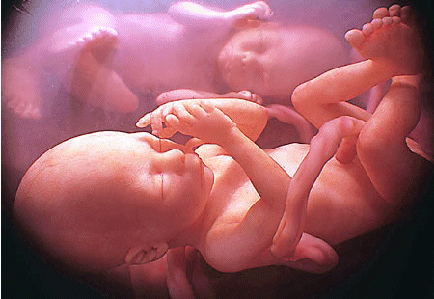 Many people are unsure about when a human being should be granted the right to life. At the point of conception, the human doesn’t appear to have many of the qualities of what we would call a “person”, but few people can see a late term baby in the womb with all the features of a newborn, knowing that they can feel physical pain during abortion, and that they could survive outside of the womb, and still think that they do not deserve some protection. Even if you are fine with first term abortion, march for the sake of those late term babies.
Many people are unsure about when a human being should be granted the right to life. At the point of conception, the human doesn’t appear to have many of the qualities of what we would call a “person”, but few people can see a late term baby in the womb with all the features of a newborn, knowing that they can feel physical pain during abortion, and that they could survive outside of the womb, and still think that they do not deserve some protection. Even if you are fine with first term abortion, march for the sake of those late term babies.
3. Doctors and nurses are forced to be complicit in the process of abortion.
Often the argument is put forward, “If you think that abortion is wrong, then don’t have one.” Well, Victorian doctors and nurses do not have that freedom. Even if they believes that abortion is a form of murder, or even if the child is in its final term, then by law the doctor or nurse must either perform the abortion themselves or refer the patient to someone who will. If you are pro-choice you may also believe in a medical practitioner’s right to choose. If you think that doctors and nurses should be allowed to conscientiously object to being complicit in an abortion, then join us in marching for this law to be changed.
4. Our current laws allow for partial-birth abortion.
Partial-birth abortion, also known as Intact dilation and extraction (IDX) is a very controversial form of abortion that is banned in many places around the world. It involves killing the child on the very verge of being born, when its entire body is out of the womb except for its head. This is the sworn testimony of nurse, Brenda Shafer, who describes what happens during the procedure:
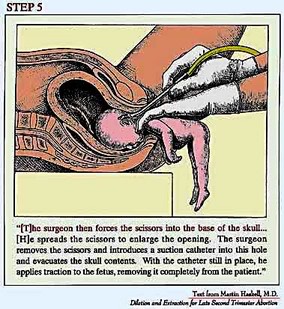 “I stood at the doctor’s side and watched him perform a partial-birth abortion on a woman who was six months pregnant. The baby’s heartbeat was clearly visible on the ultrasound screen. The doctor delivered the baby’s body and arms, everything but his little head. The baby’s body was moving. His little fingers were clasping together. He was kicking his feet. The doctor took a pair of scissors and inserted them into the back of the baby’s head, and the baby’s arms jerked out in a flinch, a startled reaction, like a baby does when he thinks that he might fall. Then the doctor opened the scissors up. Then he stuck the high-powered suction tube into the hole and sucked the baby’s brains out. Now the baby was completely limp. I never went back to the clinic. But I am still haunted by the face of that little boy. It was the most perfect, angelic face I have ever seen.† Â
“I stood at the doctor’s side and watched him perform a partial-birth abortion on a woman who was six months pregnant. The baby’s heartbeat was clearly visible on the ultrasound screen. The doctor delivered the baby’s body and arms, everything but his little head. The baby’s body was moving. His little fingers were clasping together. He was kicking his feet. The doctor took a pair of scissors and inserted them into the back of the baby’s head, and the baby’s arms jerked out in a flinch, a startled reaction, like a baby does when he thinks that he might fall. Then the doctor opened the scissors up. Then he stuck the high-powered suction tube into the hole and sucked the baby’s brains out. Now the baby was completely limp. I never went back to the clinic. But I am still haunted by the face of that little boy. It was the most perfect, angelic face I have ever seen.† Â
Partial-birth abortion is as close to infanticide as you can get. It is killing a baby when it is almost completely out of the womb and justifying it by the fact that the babies head is not outside as well. And it is legal in Victoria.
Whether you call yourself pro-life or pro-choice, if that law turns your stomach, then join us on Saturday.
5. If an abortion fails, the living baby is left to die.
This may sound extreme, but it is actually true. Consider the scenario… During a late term abortion, the baby is removed but they abortionist failed in their attempt to terminate the child. Now they have on their hands a living, breathing, BORN child. What must they do? Well, in Victoria the child still has no right to life, and these unwanted babies are left to die without food or medical support.
Every year in Victoria, more than 50 babies die shortly after failed abortions. In 2010, Peter Kavanagh MLC (DLP, Western Victoria) raised a motion that these deaths should be investigated. The motion was voted down. They didn’t even want to investigate it. In a media release, Peter Kavanagh said: “My suspicion that abortionists assume the right to kill any baby after birth, whom they try but fail to kill before birth, is now confirmed, however, with the revelation that survivors of abortion are being deliberately neglected to death. One nurse even reports that she was told to drop a surviving victim of an abortion into a bucket of formaldehyde.”
Most people, even hard core pro-choice advocates, would agree that a child should be afforded basic human rights after it is out of the womb, and that if partial-birth abortions aren’t infanticide, this surely is. And yet, in Victoria, that is what the law allows.
If all this information about the Victorian abortion laws is new to you, then check out the following video, which explains it in a bit more detail:
There are many questions raised by the issue of abortion. There are many discussions worth having and there are many compassionate and thoughtful people on both sides of the debate.
But even if you fall more on the pro-choice side, you might still be able to stand with some pro-lifers in saying that Victoria’s abortion laws, as they currently stand, are wrong and worth protesting.
I hope to see you there.
Saturday 12th October, meet at Treasury Gardens in Melbourne by 1pm.
Click here for the Facebook event
Click here for the “March for the Babies” Website
(6426)
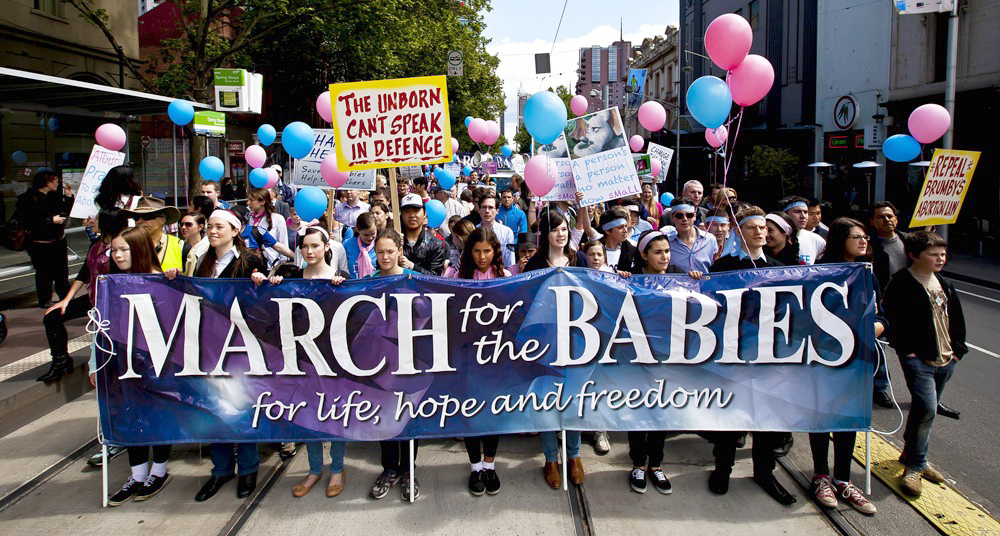
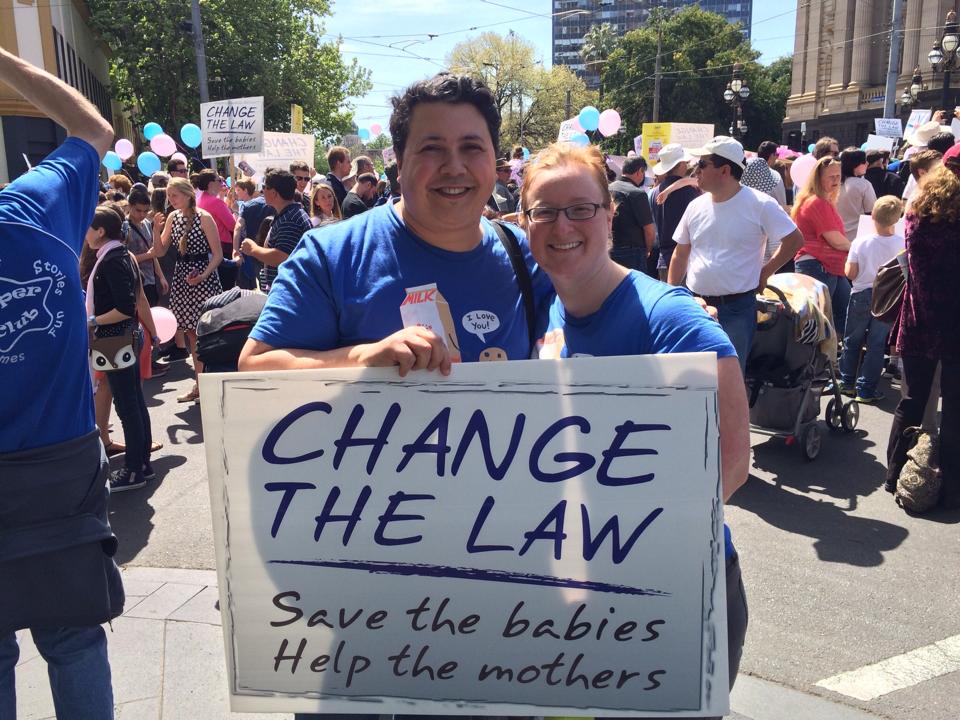

Will we be sharing Parliament House steps with the Anti[Islam rally?
I think that will be in a different part of the city.